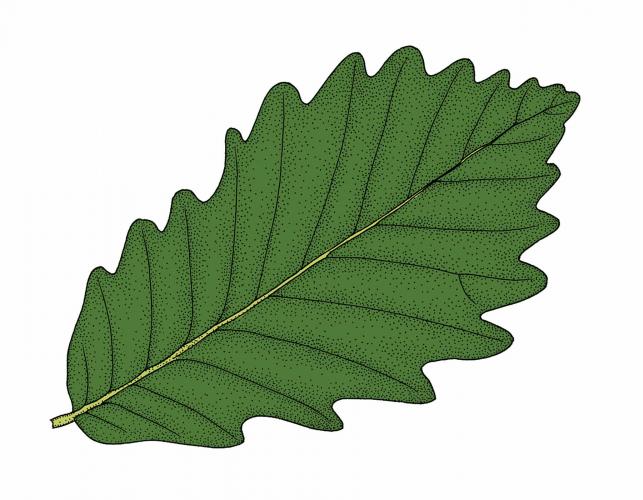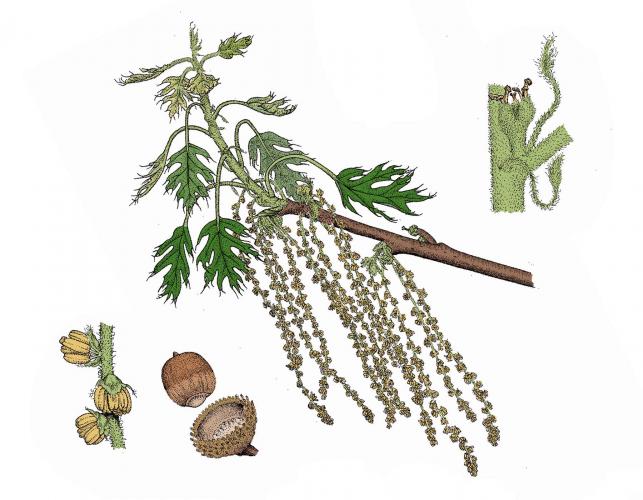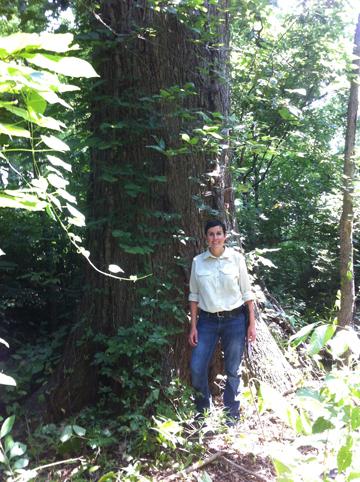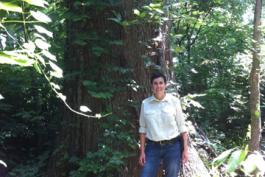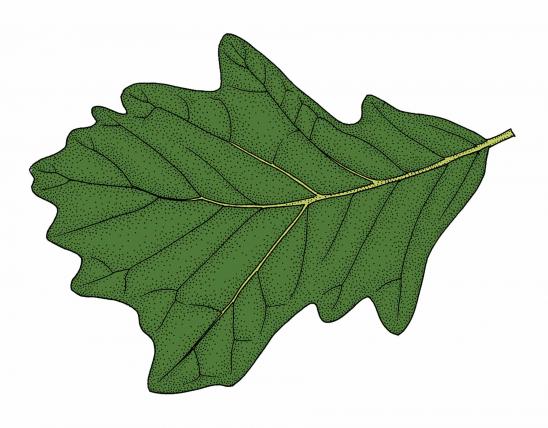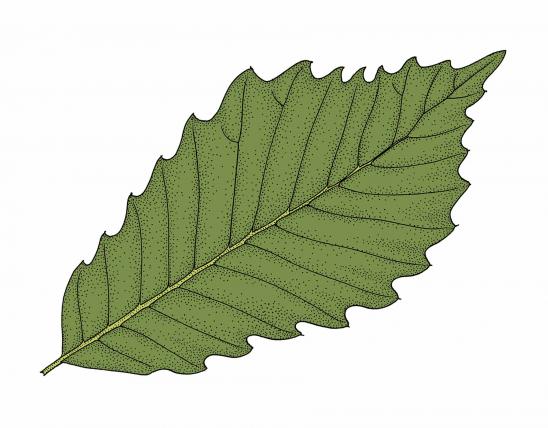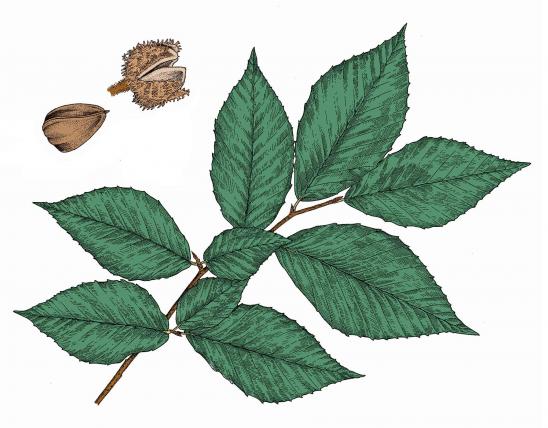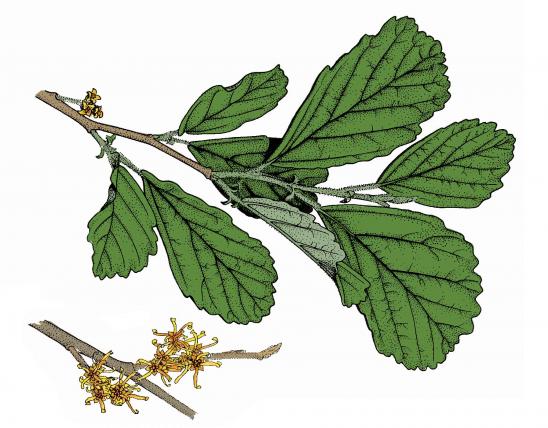
Swamp chestnut oak is a medium to large tree with a wide, rounded crown and bark resembling that of white oak.
Leaves are alternate, simple, 4–8 inches long, broadest above the middle, margin with large, rounded or sometimes sharp teeth; tip pointed. Upper surface dark green, shiny, smooth; lower surface whitish, velvety; leaf stalk ¾ inch long. Leaves turn reddish- or yellowish-brown in fall.
Bark is light gray or tan, with scaly plates on mature trees; inner bark reddish.
Twigs are moderately stout, smooth, reddish-brown.
Flowers April–May, in catkins.
Fruits September–October, acorns solitary or in pairs; brown, shiny, broadest near the base, gradually tapering to a rounded tip, large, to 1½ inches long; cup covering a third to a half of the nut, bowl-shaped with matted silky hair, scales wedge-shaped, hard, stout, hairy, attached only at the base and overlapping, giving a somewhat fringed appearance. Nut sweet, edible; ripening in autumn of the first year.

Habitat and Conservation
Human Connections
Ecosystem Connections
